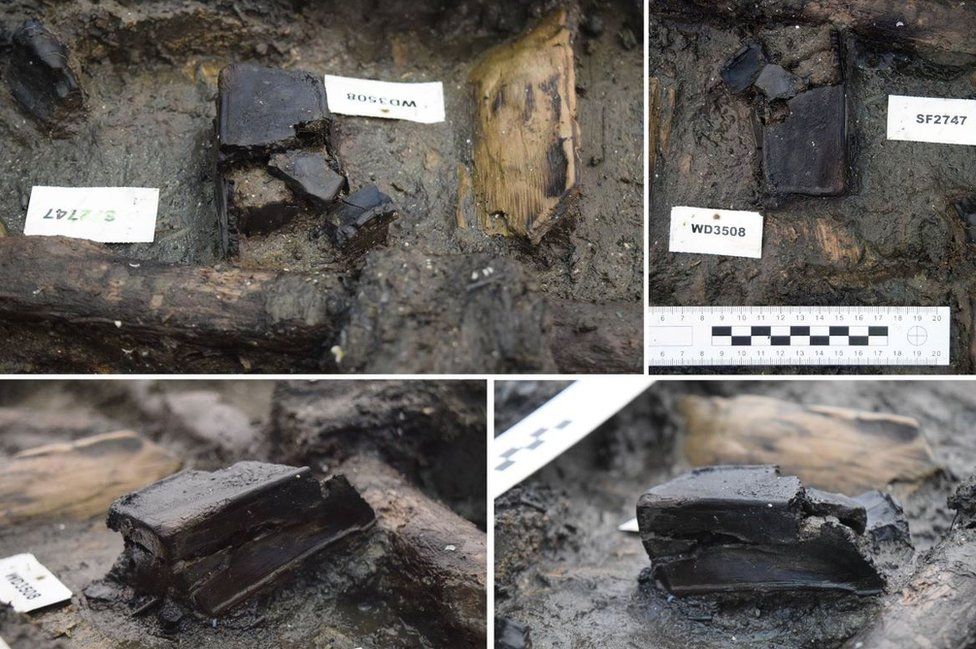New finds at Bronze Age 'Pompeii' Must Farm quarry
- Published

A tiny wooden box with its contents still inside, an intact pot and animal bones are some of the first items unearthed inside a roundhouse at what has been dubbed "Britain's Pompeii".
The UK's "best preserved Bronze Age dwellings", found at a Cambridgeshire quarry, date from about 1,000-800 BC.
They were preserved in silt after falling into a river during a fire.
The "delicate task" to uncover the contents has just begun but the finds have been called "amazing artefacts".
The two or three circular wooden houses uncovered by archaeologists were built on stilts, and formed part of a settlement partially destroyed by fire 3,000 years ago.
The site, at Must Farm quarry near Whittlesey, has been described as "unique" by David Gibson, from Cambridge Archaeological Unit, which is leading the excavation.
Most Bronze Age sites have no timber remaining, just post-holes - but here, the stilts, roof structure and walls have been unearthed.
It is thought the roof fell in during the fire, covering the contents of the houses. Much would have been preserved as it sank into the Fenland silt.
Only a small section of one of the house interiors is being examined at the moment.
Bone 'cluster'
One of the first items found was "a very small, delicate wooden box that is mostly complete".
Archaeologists said they were "thrilled" to discover such a well-preserved artefact.
The contents appear to be inside still, but work to examine what those might be will not take place until next week.
An intact "fineware" pot and animal bones have also been found, all of which must be "meticulously" cleaned and documented.
The "cluster" of fish and animal bones uncovered inside "could have been the kitchen waste of the time," they said.
The team is currently about half-way through the eight-month dig to uncover the secrets of the site and the people who lived there.
Although they are in the very early stages of examining the house interior, the quality and quantity of what has been uncovered so far has left archaeologists "very excited".
The site has the "potential for more uncommon household objects including tools, cutlery and even furniture," they said.
The excavation is being jointly funded by Historic England and quarry owner Forterra.
Pompeii, in ancient Rome, was hit by a volcanic eruption in AD 79.
Tonnes of ash fell, preserving much of the city for thousands of years.
Bronze Age Europe and Britain
- The Bronze Age in Britain lasted from between 2500 and 2000BC until the use of iron became common, between 800-650BC
- It came after metalworkers discovered that adding tin to copper produced bronze, used for tools and weaponry which were much more hard-wearing
- The Greek poems of Homer - though composed later - look back to a time when bronze weapons were used
- Classic Bronze Age remains include sophisticated axes, precious gold objects, and round burial mounds or "barrows" of which many can still be seen in Britain
- Published30 January 2016
- Published12 January 2016
- Published12 January 2016
- Published12 January 2016